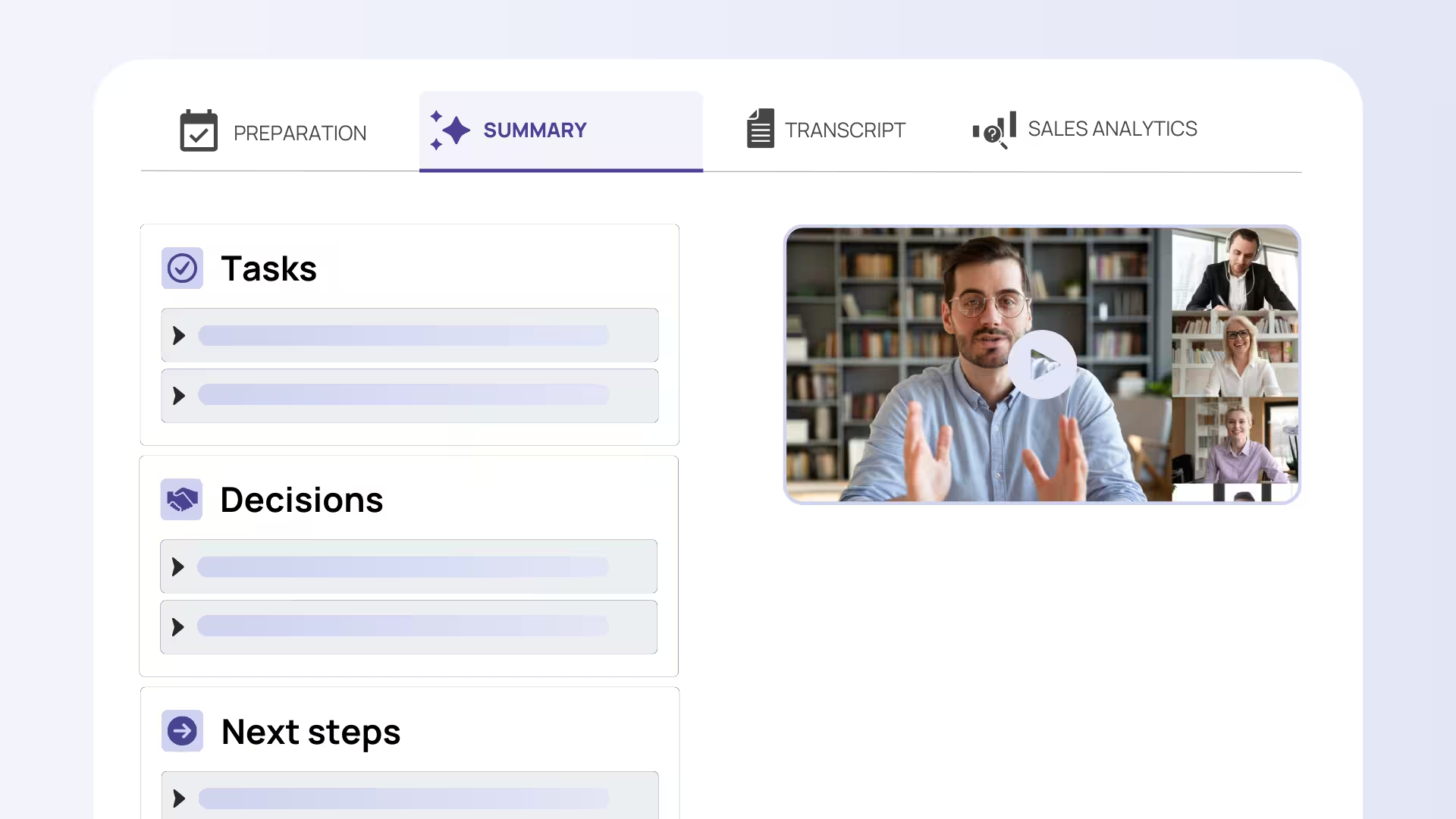Table of Contents
Understanding the Value of Jour Fixe Meetings
In today's fast-paced business environment, teams struggle to maintain consistent communication and alignment. Remote work has made this challenge even more pressing. Enter the Jour Fixe meeting—a structured, recurring gathering that's becoming increasingly valuable for organizations worldwide.
Jour Fixe, French for "fixed day," represents a scheduled meeting that occurs at regular intervals to keep teams synchronized and projects on track. While this concept has deep roots in European business culture, it's gaining traction globally as companies recognize the need for predictable communication rhythms.
This article explores everything you need to know about Jour Fixe meetings: their definition and structure, key benefits and challenges, proven best practices, and how modern technology is transforming their effectiveness. Whether you're managing a small team or overseeing multiple departments, mastering these meetings can significantly improve team alignment, communication, and overall productivity.
What Is a Jour Fixe Meeting? Definition and Core Characteristics
The Meaning and Origin of Jour Fixe
The term "Jour Fixe" literally translates to "fixed day" in French, reflecting its core principle: regularity and predictability. These meetings typically occur weekly or bi-weekly, creating a steady rhythm that teams can rely on.
The concept is especially prominent in German-speaking countries, where business culture values structure and routine. However, its practical benefits have made it popular across various industries and regions. Unlike ad-hoc meetings that respond to immediate needs, Jour Fixe meetings provide a consistent forum for ongoing communication and coordination.
Typical Structure and Format
A well-structured Jour Fixe meeting follows a predictable format that participants can prepare for. The fixed timing and regularity serve as cornerstones for consistency, helping teams develop effective communication habits.
Common agenda components include status updates from team members, review of action items from previous meetings, and discussion of upcoming tasks and potential roadblocks. This structure ensures that nothing falls through the cracks while maintaining focus on forward progress.
Three key roles emerge in effective Jour Fixe meetings: the facilitator or moderator who guides discussions, the note taker who captures decisions and action items, and the participants who contribute updates and insights. Most organizations find that 30-60 minutes provides enough time for meaningful discussion without overwhelming participants' schedules.

Why Hold a Jour Fixe Meeting? Purpose and Importance
Key Objectives of Jour Fixe Meetings
Jour Fixe meetings serve several critical functions that contribute to team success. They ensure continuous alignment and transparency within teams, preventing the information silos that can derail projects. By creating a regular checkpoint, these meetings facilitate early problem detection and resolution, often catching issues before they become major obstacles.
The steady communication rhythm supports project continuity, especially important in complex initiatives where multiple team members contribute different pieces. Regular progress tracking also fosters accountability, as team members know they'll report on their commitments in the next session.
For example, a software development team might use their weekly Jour Fixe to discuss sprint progress, identify blockers, and coordinate upcoming releases. This consistent communication helps prevent last-minute surprises and ensures everyone understands their role in the larger project.
The Cultural Context and Its Influence
The popularity of Jour Fixe meetings in German-speaking countries reflects cultural values that emphasize structure and routine. This cultural approach affects how organizations adopt and perceive these meetings' value. In cultures that prioritize flexibility and spontaneity, teams might need to adapt the format to feel less rigid.
Different industries also influence how Jour Fixe meetings evolve. Tech companies often integrate them with agile methodologies, while finance teams might focus more on detailed reporting and compliance updates. Understanding your organizational culture and industry context helps tailor the format for maximum effectiveness.
Maximizing Effectiveness: Best Practices and Tips for Jour Fixe Meetings
Designing a Productive Agenda
A successful Jour Fixe meeting starts with a well-designed agenda shared in advance. This preparation allows participants to gather relevant information and think through their contributions before the meeting begins.
Focus on priorities and outcome-driven discussions rather than exhaustive status reports. Limit agenda items to prevent information overload and ensure each topic receives adequate attention. A typical agenda might include three main sections: progress updates, problem-solving discussions, and planning for upcoming work.
Clear Roles and Responsibilities
Assigning clear roles prevents meetings from becoming unfocused conversations. The meeting facilitator guides discussions, ensures all voices are heard, and keeps the group on track. Meanwhile, a designated note taker captures decisions and action points—or teams can use transcription tools like Sally, the GDPR-compliant AI meeting assistant, to automatically record and summarize key points.
This role clarity becomes even more important in remote settings, where visual cues are limited and technical issues can disrupt flow. Having predetermined responsibilities helps maintain structure even when unexpected challenges arise.

Measuring Meeting Success
Effective Jour Fixe meetings require measurable success criteria. Define key performance indicators (KPIs) to assess meeting effectiveness, such as meeting duration adherence, percentage of agenda items resolved, and participant satisfaction surveys. Track the impact on project milestones to understand how these meetings contribute to broader organizational goals.
Recent research from MeetingScience.org found that teams tracking these metrics reported a 15% improvement in meeting productivity. Use these measurements to identify improvement opportunities and adjust formats accordingly, ensuring your Jour Fixe meetings continue providing value.
Engaging Participants and Avoiding Monotony
Regular meetings can become routine in negative ways if they lack energy and engagement. Rotate meeting leadership to maintain freshness and give different team members ownership of the process. This rotation also helps develop leadership skills across the team.
Encourage open feedback and participation from all attendees. Create space for creative problem-solving and innovation, not just status reporting. Incorporate occasional breaks or format changes when appropriate, especially for longer sessions or larger groups.
Modern Adaptations: Leveraging Technology and Remote Work Strategies
Using Technology to Facilitate Jour Fixe Meetings
Popular virtual meeting platforms like Zoom, Microsoft Teams, and Google Meet have made Jour Fixe meetings accessible to distributed teams. Integration with project management tools like Jira and Asana creates seamless workflows between meeting discussions and task management.
Modern tools enable shared agendas, live document collaboration, and asynchronous updates that enhance meeting effectiveness. AI-powered solutions like Sally can automatically join meetings, transcribe conversations, and generate summaries, allowing teams to focus more on discussion and less on note-taking while ensuring nothing important is lost.
Best Practices for Remote and Hybrid Jour Fixe Meetings
Remote Jour Fixe meetings require specific adaptations to combat virtual fatigue and maintain engagement. Keep meetings concise—30-45 minutes works well for most remote teams. Encourage video participation to maintain non-verbal communication and personal connection, while respecting bandwidth limitations and privacy concerns.
Use collaborative digital agenda boards that remain visible before, during, and after meetings. This shared workspace helps maintain focus and provides a reference point for follow-up actions. Promote flexibility by combining synchronous meetings with asynchronous updates, allowing team members to contribute meaningful input regardless of time zones or schedules.

Case Studies Demonstrating Success
Real-world examples demonstrate the transformative potential of well-executed Jour Fixe meetings. Siemens restructured their approach by moving from weekly hour-long sessions to bi-weekly 30-minute meetings supported by asynchronous updates. This change reduced meeting time by 40% while improving team satisfaction scores.
A startup implemented a hybrid Jour Fixe model using digital Kanban boards to drive agenda focus. This visual approach cut off-topic discussions by 30% and improved project tracking accuracy. These examples show how adapting the traditional format to modern work patterns can enhance rather than compromise effectiveness.
Conclusion: Turning Jour Fixe Meetings into a Strategic Asset
Jour Fixe meetings play a critical role in fostering team alignment, transparency, and progress tracking when executed thoughtfully. Their success depends on structured agendas, clear roles, and purposeful meeting design that respects participants' time and contributions.
The key to effective Jour Fixe meetings lies in measuring their effectiveness and adapting to your specific industry and cultural context. What works for a German engineering firm might need modification for a Silicon Valley startup, but the core principles remain valuable across different environments.
Modern technologies and remote work best practices offer new opportunities to make Jour Fixe meetings more engaging and impactful. Tools like Sally can streamline documentation and workflow integration, while digital collaboration platforms enable more inclusive participation regardless of location.
Transform your Jour Fixe meetings from routine obligations into drivers of collaboration and project success. Start by implementing clear agendas and measurable outcomes, then gradually introduce technological enhancements that support your team's specific needs. With consistent effort and ongoing refinement, these meetings can become one of your most valuable tools for team coordination and organizational success.

Try meeting transcription now!
Experience how effortless meeting notes can be – try Sally free for 4 weeks.
Test NowOr: Arrange a Demo Appointment

.avif)



